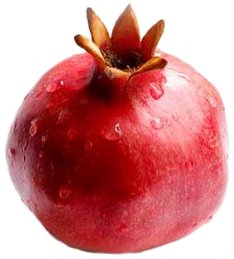

Pomegranate

Punica. (Latin name, Malum punicum, of Pliny.) Punicaceae. Two species of deciduous, densely branched shrubs or small trees. Leaves opposite, clustered, entire, without stipules. Flowers borne in clusters of 1-5, bisexual, perfect, axillary, and terminal, borne at branch tips; calyx tubular or more or less campanulate, sepals 5-8, fleshy, valvate; petals 5-7, overlapping, perigynous; stamens many; style 1, short; ovaries inferior, with numerous locules, borne in concentric circles and 1 to 3 separated layers; ovules numerous. Fruit a globose, pulpy berry with numerous fleshy seeds, forming a thick, leathery shell. E Mediterranean to Himalaya. Z9. CultivationGenerally requiring long, hot continental summers to ripen fruit, Punica granatum is nevertheless a handsome ornamental, for warm south-facing or southwest-facing walls in regions where frosts are light and short-lived. Valued for its attractive, glossy foliage, which colours well in spring and autumn, it bears beautifully textured and brilliantly coloured flowers over long periods in summer. In Mediterranean climates it is sometimes used as hedging. Grow in well-drained, fertile, moderately-retentive, loamy soils in full sun. Although it may be cut to the ground by severe frost, given wall protection and a deep mulch at the roots, living wood will re-sprout vigorously from the base. Wall-grown specimens may be grown as shrubs (preferably), or tied in and fan trained. Prune in late spring or summer to remove old or weak wood and shorten outward growing shoots from trained specimens in spring at bud break; flowers are carried on the tips of the current years growth. Tub-grown specimens were traditionally grown in the cool glasshouse to be moved out of doors for the summer months, with treatment as for Citrus. Propagate by suckers, semi-ripe cuttings or layers, or by grafting on to seedling understock. Also by seed in spring; named varieties do not come true. Punica granatumPOMEGRANATE. Deciduous, branching shrub to 2m, or small tree to 6m, angled, glabrous, occasionally with spiny branches. Leaves 2-8cm, obovate to oblong, pale green, glossy above, glabrous, entire, rigid, opposite, occasionally alternate. Flowers to 3cm diameter, orange-red, funnelform-rotate, sessile; petals crumpled. Fruit to 12cm diameter, globose, brown-yellow to purple-red, many-seeded, with persistent calyx; fleshy juicy, edible, crimson. Many local cultivars, for example ‘Fleshman’, sweet, soft-seeded; ‘Wonderful’, juicy, wine-flavoured; vigorous and crops well.
|
Home
Grow Nuts
Grow Vegetables
Cyberian Index
If you like this website and want one of your own contact
Cyberian All information correct at
time of publication and open to updates as necessary. No part of this website,
or its vectors, may be produced in any shape or form, using any type or design
of medium, system, equipment or otherwise without the prior written consensual
notice of the Cyberian. Any breach of these requirements will result in the
appropriate action. If in doubt, e-mail contact is recommended.
Some components of this website were obtained as open-source software and are
used in the same non-profit manner on this website.